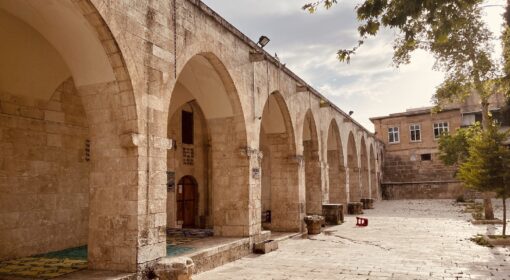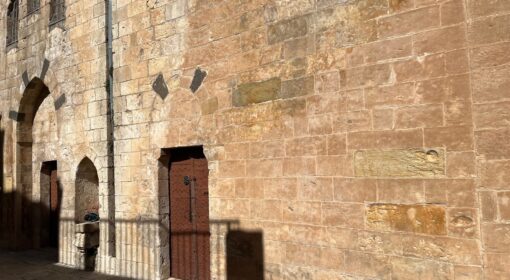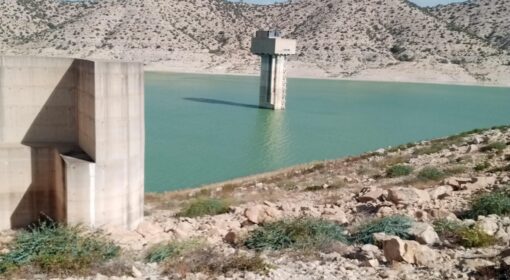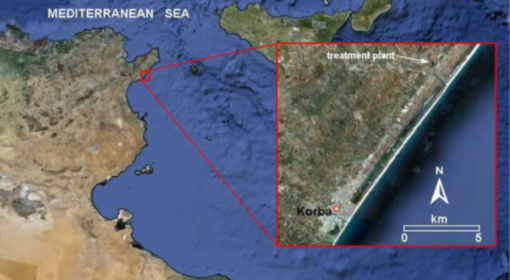By Frank van Steenbergen
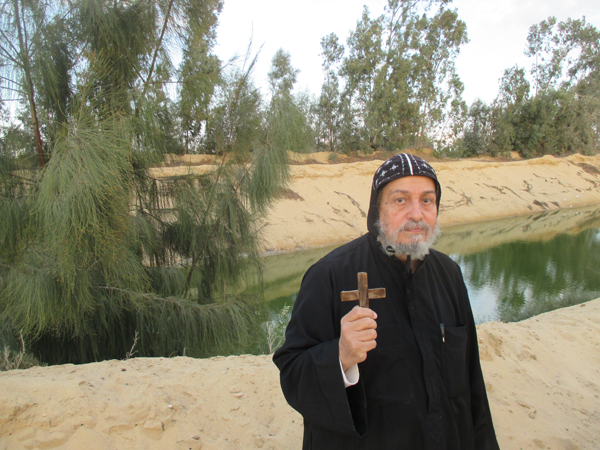
St. Bishoy Monastries – Dug out shallow water source (own image)
The oases of Wadi Natrun in Egypt’s western desert have been cultivated since the 4th Century. Now the question is how much longer this will last.
Four Coptic monasteries have been in existence in Wadi Natrun for more than fifteen centuries, one of which is the monastery of Saint Bishoy. The monasteries thrived on a unique geological feature – a deep depression in the landscape bringing shallow groundwater close to surface and feeding a series of lakes in the middle of the desert, the quintessential oases.
Establishing the monastery required three essentials: digging a well, building a church and constructing a grain mill. The oldest well in the Saint Bishoy monastery is still preserved and is a small monument now. It is called Martyr’s well – commemorating a grisly event in 444 AD when 49 elders were killed and the blood from the deadly swords was washed in the well and the dead bodies were thrown in it.
The founder and name-giver of the oasis monastery, Saint Bishoy, was a Coptic monk. One day he received a way-ward stranger in his monastery. While receiving him and washing his feet, he realized from the wounds that he was washing the feet of Jesus. Bishoy was lucky to meet Jesus for a second time. This second time Jesus came in the shape of an old frail man who was lost in a crowd that was eager to see Jesus, who had announced he would make an appearance at a nearby mountain. Rushing to see Jesus, everybody ignored the frail man, yet he was helped on his feet by Saint Bishoy. The frail man was Jesus. Saint Bishoy’s compassion was rewarded with a miracle: his body, even after death, would remain immaculate.
Fifteen centuries later the Saint Bishoy monastery is still thriving but it is under a new threat. In the last twenty years there has been another rush: this time it is to reach the groundwater in this desert area. Over the years more than 2000 deep tube-wells have been sunk within a radius of 25 kilometres from the oasis. The wells are mainly used for growing export crops: potatoes, citrus fruits, but also bananas, wheat, fodder and pomegranate. The crops are finding their way to markets in Europe and Asia, bringing in foreign currency. The Moghra Aquifer lying underneath the Wadi Natron area however, is ‘fossil’. What this means is that its water is not renewed. With the accelerated pumping that is taking place since two decades this means that the aquifer will dry up sooner or later – probably in sixty years with increased salinity starting to appear earlier.
In spite of laws and regulations in Egypt, the development of groundwater in its western desert areas is entirely unregulated. In fact as Water Laws go, the Law 12 has many sensible clauses: it is prohibiting anyone to dig any well prior to obtaining permission from the Ministry of Water Resources and Irrigation; it is not permitting to pump more than what is prescribed in the licence and not allowed to waste water. There is nothing wrong with the official procedure: providing document proof of land ownership; submit the application for a licence; inspection of the land to be served from the wells with GPS marking; ascertain a minimum distance from neighbouring wells set at 500 meter; provision of basic hydrological data on hydrogeological characteristics of the area; endorsement by an official research institute and installation of well including compulsory water meter. The reality is however different from the procedure. The common practice is for licenses to be obtained after drilling of the wells. The main motivation to obtain a permit is to get access to subsidized electricity connections. For wells that are far from the grid no licenses are obtained. Water meters are not necessarily installed and the endorsement by the groundwater research institute is a paper formality. Some water waste practices persist: growing bananas in the desert and using centre pivot irrigation in the sweltering summer season.
All this is infinitely far from good practice for using scarce non-renewable water. The recommendation for the use of non-renewable groundwater systems calls for a good understanding of the resource, the allocation of non-renewable water to uses with high socio-economic benefits and the phasing in of an exit strategy. Nothing of this kind has happened in the vulnerable aquifer at Wadi Natrun, though some agricultural enterprises are considering to join forces and agree on self-regulation.
The great worry is that the Wadi Natrun story is repeated ten-times over. Recently, a new ambitious plan to reclaim 400,000 ha of land in desert irrigated with groundwater has been announced by the military leadership government. With the experience of Wadi Natrun this will be a disaster in the making.
A larger question is: is there a point in growing vegetables in the desert at this conjecture? It does not create much jobs and uses subsidized inputs, The only plus is that it brings foreign currency into the country yet some of this leaves the country again as fuel is imported and sold at subsidized rates. There are other high value uses – such as being a strategic reserve for the nearby Cairo metropolis. These options are not considered now, but they urgently should.
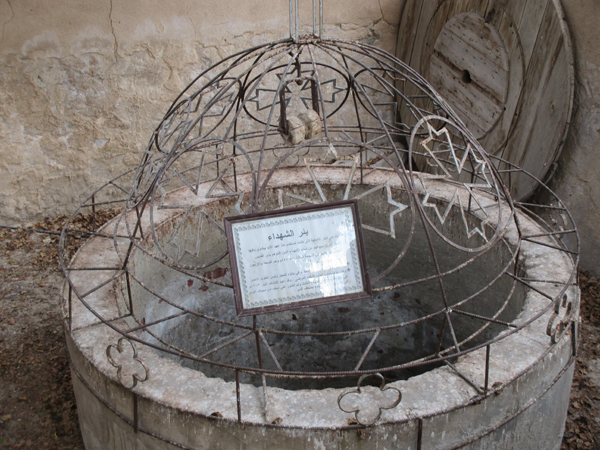
Martyr’s Well Wadi Natrun (own image)
Prepared in support of the development of Voluntary Guidelines for Sustainable Water Allocation in Agriculture by FAO, ESCWA and AOAD for the League of Arab States
